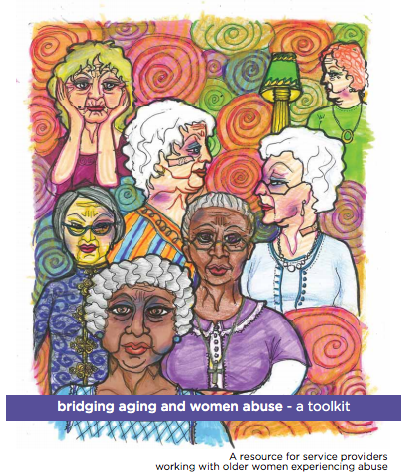Due to the complex nature of homelessness—and our inability to count everyone experiencing it—the statistics vary on how many senior women are homeless.
From what we can tell, they are not a majority of the homeless population. According to the National Shelter Study (2009), 8.3% of residents were over 55. Of these, 80% were men. (Because this study only includes people in the shelter system, there are many more seniors who are hidden homeless, avoiding shelters, or vulnerably housed.) A more recent study from 2013 found that people 50+ made up 16% of the homeless population in Metro Vancouver, but didn’t break down the statistics by gender.
Despite not being the largest group experiencing homelessness, the unique circumstances of senior women should be acknowledged and addressed; especially with growing evidence that homelessness will increase within this population.
Senior women are at risk of homelessness
In 2013, The Organisation for Economic Co-operation and Development (OECD) reported that Canada has a low old-age poverty rate compared to other OECD countries—7.2%—but it is rising while other countries’ are decreasing. Furthermore, seniors in Canada must rely on their own capital, including private pensions, for 42% of their post-retirement income. (In other countries, this number is around 18%.) This, combined with the extremely low availability of affordable housing, means that older Canadians who have experienced job insecurity or interrupted employment are less likely to have private pensions and retirement savings, and more likely to find themselves living in poverty.
Unsurprisingly, the same report found that “the biggest increase in old-age poverty occurred among elderly women, especially those who are divorced or separated.” Some of the reasons stated by the OECD are similar to those I mentioned in my previous blog post about single-parent families: “Higher poverty among older women reflects lower wages, more part-time work and careers gaps during women’s working lives…”
A report by the Vancouver Shelter Strategy group stated that women are particularly vulnerable to homelessness due to a variety of reasons, including: financial difficulties due to loss of primary breadwinner or caretaker; financial pressures associated with grandmothers raising children; living alone; and being socially isolated. Similarly, a Toronto study on homeless older adults stated that older women are more likely to become homeless due to family-related crises (older men tend to become homeless due to a lack of work); and they are more at risk due to living alone and in poverty.
The OECD also references the longer life expectancy of women as a risk factor for poverty, as many have not been able to save enough to sustain themselves. Other factors contributing to senior homelessness include mental health issues, loss of social supports, disabilities, overcrowding, physical health problems, loss of housing, and domestic violence or elder abuse.
Increasing numbers of older women experiencing homelessness has been observed in other countries as well. In January 2013, Rose Aguilar wrote about the lives of homeless 50+ women in San Francisco, stating: “Every homeless advocate and shelter monitor I spoke with told me the older homeless population in San Francisco is exploding. The problem is bound to get worse as the price of housing reaches new heights.” Earlier this year, Julia May described a similar situation in and around Melbourne, Australia, highlighting the fact that approximately “ 4800…women aged over 55 sought assistance from homelessness services, an increase of 34 per cent on the previous year.”
Existing services and recommendations
Authors of the “Bridging aging and women abuse” toolkit recommend working with senior women to determine what their needs are and how to approach them. They point out that many existing services might not be appropriate for older women. Some examples include:
- Shelters serving younger women with children can be noisy and stressful; nor are they equipped to deal with complex health or mobility differences
- These shelters also tend to be for short-term stays, when senior women need somewhere to stay long-term
- Co-ed shelters may be stressful or dangerous for older women fleeing abusive situations
- Shelters may not allow women in who are caring for grandchildren or adult children
Senior women are more than frail people in need of care—they have complex and varied needs. Ryan Woolrych draws attention to the gendered dimension of homelessness in a Simon Fraser University update, writing: “…women are more likely to report emotional attachment to home, as a place to house social interactions and activities, as a secure environment, and as an expression of self and identity, making the transition into homelessness more traumatic and disengaging.” For Aboriginal elderly women, leaving their remote communities to find affordable care in urban areas can be overwhelming.
Potential solutions
As we’ve written before, prevention is the best approach to reducing homelessness. Here are a few examples from Woolrych and Gibson on how this would look with seniors:
- Needs-based funding over population-based funding (young people are targeted for employment and addictions programs, but these do not benefit seniors, who look at their future differently)
- Education on available resources for seniors
- More transitional housing (for cleaning, fumigating, etc.)
In their report on Aboriginal seniors experiencing homelessness, Beatty and Berdahl recommend establishing long-term care facilities in major prairie cities and on reserves; as well as funding initiatives for Aboriginal caregivers. Indeed, more publicly funded long-term care for all Canadian seniors—like those created in Sweden, Denmark, and Iceland—would be beneficial for all, and would help relieve some of the financial stress on our seniors.
HEARTH advocates for service-enriched housing programs: “The central objective of service-enriched housing programs is to assist vulnerable residents to age with dignity by attending to their special physical health, mental health and social needs.” This organization has seen great success in these programs, with 78% of their survey respondents reporting satisfaction with their living environments.
While implementing any of these services or solutions, service workers must be sensitive to the unique circumstances of senior women in order to be successful.


